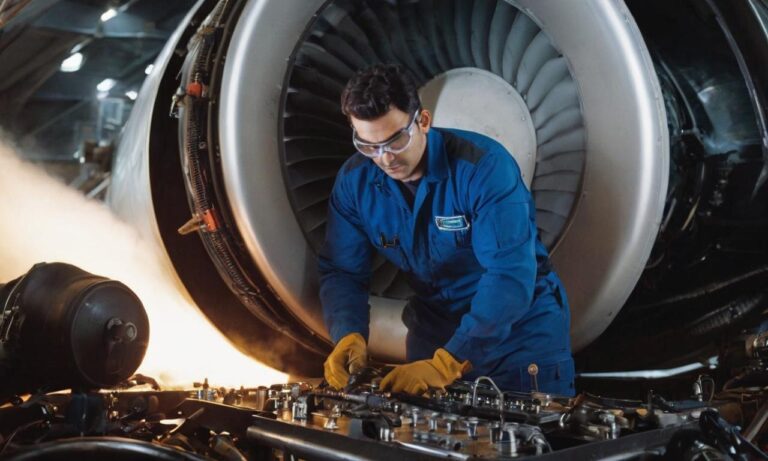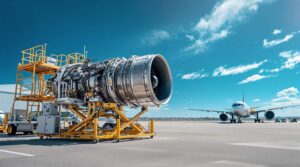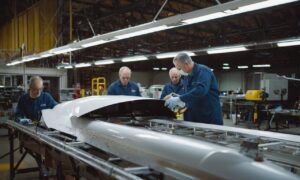When it comes to ensuring the safety and functionality of aircraft, the unsung heroes behind the scenes are the skilled professionals known as aircraft mechanics. These highly trained individuals play a critical role in the aviation industry, performing a wide array of tasks that contribute to the overall airworthiness of planes and helicopters.
The Core Responsibilities of an Aircraft Mechanic
At the heart of their duties, aircraft mechanics are responsible for inspecting, maintaining, and repairing various components of an aircraft. This includes everything from engines and landing gear to avionics systems and flight control surfaces. Their meticulous work is essential for preventing potential malfunctions that could jeopardize the safety of both passengers and crew members.
Furthermore, aircraft mechanics must stay up-to-date with the latest technological advancements in aviation. This ever-evolving field requires continuous learning and adaptation to new aircraft models and systems.
Inspections and Precautionary Measures
One of the primary functions of an aircraft mechanic is conducting routine inspections. These inspections are not only about identifying existing issues but also about preemptively addressing potential problems. By adhering to strict maintenance schedules and following detailed checklists, mechanics contribute to the overall safety and reliability of the aircraft.
They meticulously examine engines, airframes, and various components to ensure compliance with aviation regulations. This dedication to detail helps prevent mechanical failures that could compromise the integrity of the aircraft during flight.
Repair and Troubleshooting
When issues are identified, aircraft mechanics engage in precise repair work. This involves troubleshooting problems, diagnosing issues, and replacing or repairing faulty components. Their expertise extends to interpreting technical manuals, using specialized tools, and collaborating with engineering teams to devise effective solutions.
Whether it’s fixing a malfunctioning engine or addressing avionic glitches, the aircraft mechanic is a problem-solving professional dedicated to maintaining the highest standards of safety and performance.
Adherence to Regulations and Safety Standards
Aircraft mechanics operate within a highly regulated environment. Compliance with aviation authorities’ standards is paramount, and professionals in this field must be well-versed in the intricate details of safety protocols. This includes following guidelines set by organizations such as the Federal Aviation Administration (FAA) in the United States or the European Union Aviation Safety Agency (EASA) in Europe.
By strictly adhering to these standards, aircraft mechanics contribute to the overall safety and reliability of the aviation industry, ensuring that every flight is conducted with the highest level of professionalism and adherence to best practices.
Conclusion
In conclusion, the role of an aircraft mechanic is multifaceted and crucial to the smooth operation of the aviation industry. These skilled professionals are the guardians of flight safety, working diligently to inspect, maintain, and repair aircraft to the highest standards. Through their commitment to excellence and adherence to stringent regulations, aircraft mechanics play a vital role in ensuring that each flight takes to the skies with confidence.
Frequently Asked Questions
Curious about the intricacies of the aircraft mechanic profession? Here are some frequently asked questions to shed light on various aspects of this crucial role:
What qualifications are required to become an aircraft mechanic?
Individuals aspiring to become aircraft mechanics typically need a combination of formal education and hands-on experience. Most pursue an FAA-approved aviation maintenance technician program and obtain relevant certifications.
How often do aircraft mechanics perform routine inspections?
Routine inspections are a regular part of an aircraft mechanic’s responsibilities. The frequency varies based on the type of aircraft and regulatory requirements, but it’s common for mechanics to conduct thorough inspections after a certain number of flight hours or specific calendar intervals.
What challenges do aircraft mechanics face in their day-to-day work?
Aircraft mechanics encounter various challenges, including the need for precision in troubleshooting, keeping pace with technological advancements, and working in demanding environments. Adherence to strict safety regulations also adds complexity to their tasks.
| Question | Answer |
|---|---|
| How do aircraft mechanics stay updated on technological advancements? | Aircraft mechanics engage in continuous learning through training programs, workshops, and industry publications. This helps them stay informed about the latest technologies in aviation. |
| Are there specialized areas within the field of aircraft mechanics? | Yes, aircraft mechanics can specialize in areas such as avionics, airframe, or powerplant. Specialization allows them to focus on specific components and systems of an aircraft. |
Do aircraft mechanics work independently or as part of a team?
Aircraft mechanics often collaborate with a team, especially when dealing with complex repairs or major overhauls. Teamwork is crucial for efficiently addressing diverse challenges in aircraft maintenance.
Emerging Trends in Aircraft Maintenance
As technology continues to advance, the field of aircraft maintenance is witnessing several trends. These include the integration of artificial intelligence for predictive maintenance, the development of more fuel-efficient components, and the use of augmented reality for training purposes. Aircraft mechanics are adapting to these trends to enhance their skills and efficiency in maintaining modern aircraft.






